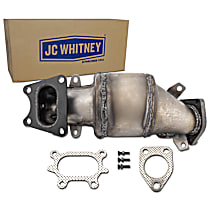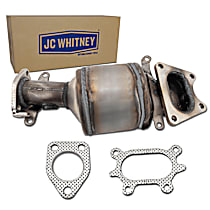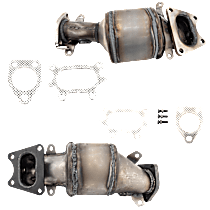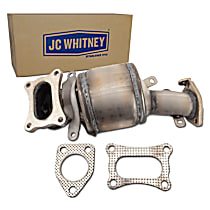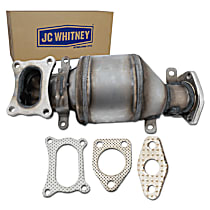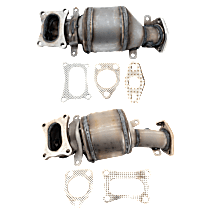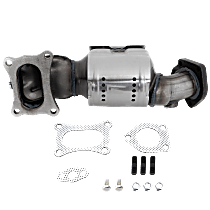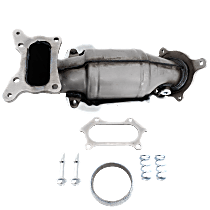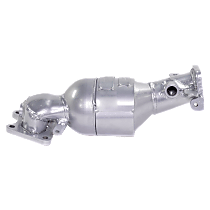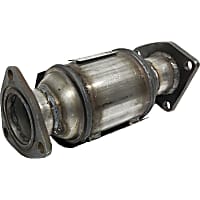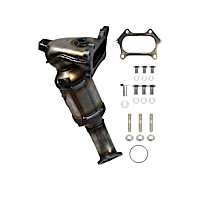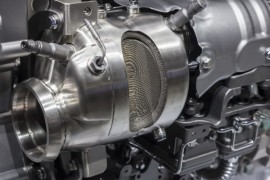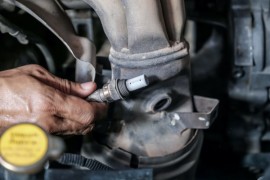{
"lazyNodes": false,
"abFitnotesFlag": false,
"abCrawlReviews": false,
"productOptionsCookie": false,
"orderDelayFlag": false,
"skipSessionCookie": false,
"covidMessage": false,
"fullTitleCookie": false,
"nrLoggerCookie": false,
"checkoutReviewCookie": false,
"productOptionSeqCookie": false,
"maintenanceFlag": false,
"bufferETACookie": false,
"multiShippingDiscountFlag": false,
"newFitmentFlag": false,
"surveyOptInFlag": false,
"crossSellFlag": false,
"skuMappingFlag": false,
"paySplitCookie": false,
"callDisableFlag": false,
"zipPaymentFlag": "u",
"hassleFreeReturn": false,
"lifetimeReplacement": false,
"cpn_off": false
}Honda Accord Catalytic Converters
Shop Catalog
![]() WARNING: This product can expose you to chemical which is known to the State of California to cause cancer and birth defects or other reproductive harm. For more information go to www.P65Warnings.ca.gov.
WARNING: This product can expose you to chemical which is known to the State of California to cause cancer and birth defects or other reproductive harm. For more information go to www.P65Warnings.ca.gov.
![]() WARNING: This product can expose you to chemical which is known to the State of California to cause cancer and birth defects or other reproductive harm. For more information go to www.P65Warnings.ca.gov.
WARNING: This product can expose you to chemical which is known to the State of California to cause cancer and birth defects or other reproductive harm. For more information go to www.P65Warnings.ca.gov.
![]() WARNING: This product can expose you to chemical which is known to the State of California to cause cancer and birth defects or other reproductive harm. For more information go to www.P65Warnings.ca.gov.
WARNING: This product can expose you to chemical which is known to the State of California to cause cancer and birth defects or other reproductive harm. For more information go to www.P65Warnings.ca.gov.
![]() WARNING: This product can expose you to chemical which is known to the State of California to cause cancer and birth defects or other reproductive harm. For more information go to www.P65Warnings.ca.gov.
WARNING: This product can expose you to chemical which is known to the State of California to cause cancer and birth defects or other reproductive harm. For more information go to www.P65Warnings.ca.gov.
![]() WARNING: This product can expose you to chemical which is known to the State of California to cause cancer and birth defects or other reproductive harm. For more information go to www.P65Warnings.ca.gov.
WARNING: This product can expose you to chemical which is known to the State of California to cause cancer and birth defects or other reproductive harm. For more information go to www.P65Warnings.ca.gov.
![]() WARNING: This product can expose you to chemical which is known to the State of California to cause cancer and birth defects or other reproductive harm. For more information go to www.P65Warnings.ca.gov.
WARNING: This product can expose you to chemical which is known to the State of California to cause cancer and birth defects or other reproductive harm. For more information go to www.P65Warnings.ca.gov.
![]() WARNING: This product can expose you to chemical which is known to the State of California to cause cancer and birth defects or other reproductive harm. For more information go to www.P65Warnings.ca.gov.
WARNING: This product can expose you to chemical which is known to the State of California to cause cancer and birth defects or other reproductive harm. For more information go to www.P65Warnings.ca.gov.
![]() WARNING: This product can expose you to chemical which is known to the State of California to cause cancer and birth defects or other reproductive harm. For more information go to www.P65Warnings.ca.gov.
WARNING: This product can expose you to chemical which is known to the State of California to cause cancer and birth defects or other reproductive harm. For more information go to www.P65Warnings.ca.gov.
![]() WARNING: This product can expose you to chemical which is known to the State of California to cause cancer and birth defects or other reproductive harm. For more information go to www.P65Warnings.ca.gov.
WARNING: This product can expose you to chemical which is known to the State of California to cause cancer and birth defects or other reproductive harm. For more information go to www.P65Warnings.ca.gov.
![]() WARNING: This product can expose you to chemical which is known to the State of California to cause cancer and birth defects or other reproductive harm. For more information go to www.P65Warnings.ca.gov.
WARNING: This product can expose you to chemical which is known to the State of California to cause cancer and birth defects or other reproductive harm. For more information go to www.P65Warnings.ca.gov.
![]() WARNING: This product can expose you to chemical which is known to the State of California to cause cancer and birth defects or other reproductive harm. For more information go to www.P65Warnings.ca.gov.
WARNING: This product can expose you to chemical which is known to the State of California to cause cancer and birth defects or other reproductive harm. For more information go to www.P65Warnings.ca.gov.
![]() WARNING: This product can expose you to chemical which is known to the State of California to cause cancer and birth defects or other reproductive harm. For more information go to www.P65Warnings.ca.gov.
WARNING: This product can expose you to chemical which is known to the State of California to cause cancer and birth defects or other reproductive harm. For more information go to www.P65Warnings.ca.gov.
![]() WARNING: This product can expose you to chemical which is known to the State of California to cause cancer and birth defects or other reproductive harm. For more information go to www.P65Warnings.ca.gov.
WARNING: This product can expose you to chemical which is known to the State of California to cause cancer and birth defects or other reproductive harm. For more information go to www.P65Warnings.ca.gov.
![]() WARNING: This product can expose you to chemical which is known to the State of California to cause cancer and birth defects or other reproductive harm. For more information go to www.P65Warnings.ca.gov.
WARNING: This product can expose you to chemical which is known to the State of California to cause cancer and birth defects or other reproductive harm. For more information go to www.P65Warnings.ca.gov.
![]() WARNING: This product can expose you to chemical which is known to the State of California to cause cancer and birth defects or other reproductive harm. For more information go to www.P65Warnings.ca.gov.
WARNING: This product can expose you to chemical which is known to the State of California to cause cancer and birth defects or other reproductive harm. For more information go to www.P65Warnings.ca.gov.
Top Rated Products
Popular Products
Product Questions & Answers
Customer Guides
How to Make Your Honda Accord Catalytic Converter Last Longer
Did you know that you can contribute to reducing air pollution by simply installing a high-quality catalytic converter? This is because your Honda Accord catalytic converter reduces your car's emissions, thus preventing harmful gases from getting into the atmosphere. To continuously reduce the toxic gases emitted by your vehicle, treat your cat con with proper care through the following:
- Remove contamination by cleaning the cat con periodically.
If your cat con has light accumulations only, then you need to clean it by removing the core first. Then, use compressed air to get rid of the light contaminates such as ash. It's best to use a rubber-tipped air nozzle, so that you can easily apply the airflow onto the inlet and outlet faces of the cat con's core.
On the other hand, if the catty has accumulated heavy contaminates, you need to put the core in an oven with a temperature of 1050°F (565°C) for 2-3 hours. You can use a ceramic kiln or a heat-treating oven if you have one. Just be sure that you choose an oven that uses an air atmosphere. Never exceed the indicated maximum temperatures as well as the time duration.
- Inspect the exhaust pipes linked to the cat con.
It takes only a few minutes of your time to check on the exhaust pipes that are attached to your vehicle's catty. Look for signs of leakage, and examine the EGR valve periodically to keep the cat con in good working condition.
Once you find that the exhaust pipes have leaks, get your car to the nearest repair shop, or fix the leaks yourself. Leaving a leaking pipe can lead to the cat con being severely burned as a result of the extremely hot temperatures inside the catty.
- Get a professional to take a look at the cat con.
Although you may be able to inspect the cat con yourself, it helps to get an expert's assessment on the condition of your catalytic converter. Let a professional mechanic take a closer look at the catty to determine if there are other parts of the exhaust system that must be repaired or replaced. Take note that a faulty cat con can lead to a failed emissions test and get you fined.
Getting a catalytic converter installed in your vehicle is one step closer to reducing the harmful emissions produced by your car. Over time, the cat con can get busted due to the contaminants that accumulate in the converter such as ash and unburned fuel. When your Honda Accord catalytic converter gets broken, signs and symptoms will start to show up. To know when it's time to change the cat con, here are a few indicators that you can rely on:
Tip #1: There's a foul smell coming from the cat con.
When you start to notice foul smell originating from your catty, it's a bull's eye sign that your cat con needs attention. A broken cat con often produces a stench, which is similar to the smell of rotten eggs combined with sulfur. With just your nose, observe if the foul odor is coming from the catty; once you've confirmed it, repair or replace the component as soon as you can.
Tip #2: You experience misfiring in the engine system.
When your car's engine misfires, the cat con becomes prone to overheating. In a similar manner, overheating in the catty can also be caused by an extremely rich fuel mixture. If the fuel mixture becomes too rich, your vehicle's raw fuel gets inside the cat con and is burned there. When this happens, the catalyst components melt and lead to cat con failure.
Tip #3: Your car's fuel economy has significantly decreased.
If the cat con is busted, you'll instantly notice that your fuel economy is no longer the same as it was before. A decrease in fuel efficiency can indicate that your cat con is malfunctioning and needs to be replaced immediately.
A lowered performance also counts as a sign of a bad cat con. You can usually trace a reduced performance to a trouble in your car's fuel system. Evidence that the fuel system has an error is when there's a restriction in the operations of the exhaust system. This means that the catalyst materials inside the catty have already melted. Have your vehicle checked by a professional as soon as possible.
How can a Honda Accord catalytic converter's performance be ensured?
The performance of a Honda Accord catalytic converter can be ensured by undergoing an emission efficiency test. However, it is imperative that proper maintenance procedures are done to the car's ignition, engine, and induction systems prior this test. Poor fuel atomization, incorrect air-fuel ratio, and unbalanced cylinder output, among others, affect the overall performance of a converter. Also, before the testing, ensure that the vehicle is warmed up and driven for a few miles.
How does plugging affect a Honda Accord catalytic converter's performance?
Plugging is caused by prolonged overheating that leads to the misfiring of the spark plugs and burning of the exhaust valves. When this happens, unburned fuel passes through the combustion chamber to the converter. In any way, a cat temperature above 2000 degrees Fahrenheit must be prevented.
What are the signs of a bad Honda Accord catalytic converter?
There are basically four signs of a problematic Honda Accord catalytic converter. First, there is loss of power when climbing uphill, which is caused by reduced fuel efficiency related to an underperforming converter. Second, there is a rattling noise present when the cat's body is tapped. This noise is due to dents caused by outside debris; severe dents can deform the internal parts of the converter, which can affect the converter's overall performance. Third, there is discoloration or warping on the converter housing, which is caused by excessive heat. Thermal shock is a result of too lean or too rich fuel mixture. Also, sudden contact with cold substances create a crack in the converter, which eventually leads to power loss, clogging, and heat buildup. Fourth, there is sulfurous odor from the emitted fumes. This is a result of a clogged converter and incorrect air-fuel mixture.
When should a Honda Accord catalytic converter be replaced?
A Honda Accord catalytic converter should be replaced once the vehicle starts producing white or black fumes, especially if these fumes give off a rotten odor. The bad thing is, odor in the fumes is a symptom that shows up late, so it is necessary to perform efficiency testing once in a while. If the vehicle is manufactured after 1988, the catalytic converter's efficiency must not be less than 90%.
